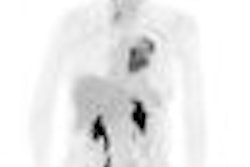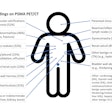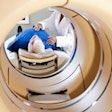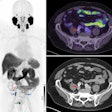TORONTO - Asymptomatic patients with type 2 diabetes who have abnormal electrocardiogram (ECG) results should receive myocardial perfusion SPECT workup due to their worse prognosis compared to those with normal ECGs, according to follow-up research to the Detection of Ischemia in Asymptomatic Diabetics (DIAD) study that was presented Sunday at the SNM meeting.
Published in April in the Journal of the American Medical Association, the DIAD study generated some controversy by finding that it wasn't cost-effective to perform coronary artery disease (CAD) screening of patients with type 2 diabetes but who had normal ECGs and no symptoms of heart disease.
Specifically, the study found that the patient population had a 22% prevalence of silent ischemia and only a 2.9% rate of cardiac events over five years. Based on the results, the authors of the JAMA paper said using SPECT myocardial perfusion imaging (MPI) to screen asymptomatic diabetic patients with normal ECGs didn't meet established cost-benefit ratios for screening studies.
But some questions arose following the study as to whether the results might change if patients with abnormal ECGs were included in the study design, according to Dr. Eli Levine of Yale School of Medicine in New Haven, CT. Levine and colleagues decided to re-examine the DIAD data to include patients with abnormal ECGs, he told SNM attendees.
The researchers started with the same patient population used in the DIAD study, which consisted of 2,764 patients. Some 1,064 were excluded for not meeting other study criteria. That left 30 patients who were specifically excluded from the original DIAD study for having abnormal rest ECGs.
The 30 patients all received SPECT MPI studies and, like the 1,123 patients in the rest of the DIAD cohort, were followed over five years. Patients in the abnormal ECG cohort tended to be older than the first DIAD group (mean age 65.2 versus 60.7), were more likely to be male (63% versus 54%), and were more likely to have a history of hypertension (77% versus 65%), but were less likely to have a family history of CAD (13% versus 20%).
The original DIAD study found that 22% (n = 113) of the 522 patients who were randomized to get imaging had an abnormal MPI study -- a statistically significant difference (p = 0.02). For the follow-up group, that percentage was nearly double, at 40% (n = 12).
The researchers also found differences in the types of abnormalities found on MPI studies between the two groups. Some 50% of the abnormal MPI exams in the follow-up group were due to scar tissue from silent ischemia (n = 6), leaving three patients (25%) with actual ischemia and three patients (25%) with ischemia and scar tissue. In a DIAD subgroup of 83 patients with abnormal MPI exams, 88% of patients (n = 73) had ischemia, 4% (n = 3) had scar tissue, and 8% (n = 7) had ischemia and scar tissue.
In analyzing the rate of primary cardiac events over the five-year study period, the follow-up group with abnormal ECGs demonstrated a higher event rate, Levine said. One patient died and one patient had a nonfatal myocardial infarction, compared to 15 deaths and 17 nonfatal myocardial infarctions in the original DIAD study. The follow-up group had an overall 6.6% rate of fatal and nonfatal cardiac events, compared to 2.8% for the original DIAD group (p = 0.5). The difference was not statistically significant due to the small cohort size in the ECG group, Levine said.
A difference that was statistically significant was found when the researchers defined cardiac events as fatal and nonfatal myocardial infarction, as well as revascularization procedures that were performed over the five-year follow-up period. Under this definition, the DIAD group had a cardiac event rate of 8%, compared to 20% for the abnormal ECG group.
Levine concluded by stating that the follow-up study results indicated that excluding patients with abnormal baseline ECGs from the original DIAD results was appropriate because these patients had silent CAD and thus had worse outcomes. That said, including this group in the DIAD study would not have changed its results to the low numbers of patients involved, Levine said.
He added that patients with abnormal ECGs should receive full follow-up evaluation due to the worse prognosis that they face, in concurrence with existing guidelines from the American Diabetes Association. Unlike the original DIAD group, screening these patients is mostly likely cost-effective due to their higher prevalence of disease.
"This analysis confirms that patients with type 2 diabetes who are asymptomatic and have an abnormal rest ECG should have a complete evaluation for coronary disease," Levine said. "Problems that were current with DIAD patients such as cost-benefit ratios are not going to be major issues, and potentially these patients could have screening much more easily than the rest of the population."
By Brian Casey
AuntMinnie.com staff writer
June 15, 2009
Related Reading
Screening for CAD in diabetics: Which patient? Which test? April 17, 2009
Screening type 2 diabetics for asymptomatic CAD not worthwhile, April 15, 2009
Copyright © 2009 AuntMinnie.com




















